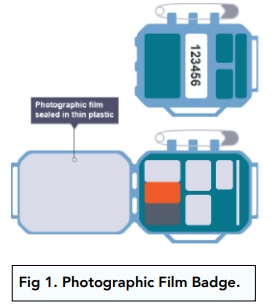Measuring Radiation (GCSE Physics)
Measuring Radiation
Measuring Radiation
Detecting Radiation
- We can detect radiation using photographic film. As the photographic film absorbs radiation, it becomes darker.
- Film badges monitor radiation. You will often see people who work with or near radiation wearing film badges. These badges monitor the levels of radiation absorbed, so workers can regularly check and control their exposure to radiation.
- Badges contain different materials. Inside the badge, you will find different materials which absorb different amounts of radiation. The radiation therefore has to penetrate through the different materials to reach the film.

Measuring Background Radiation
- We can measure background radiation. Using a Geiger-Muller tube, we can measure the level of background radiation in the air. The Geiger-Muller tube should be placed away from any known sources of radiation, so that we can get an accurate measurement for background radiation.
- The unit of radiation is the sievert. Sieverts are the units of the radiation. The symbol for sievert is Sv. Like most other units, sieverts can come in different factors, such as millisieverts (mSv).
- Millisieverts make up sieverts. 1000 millisieverts make up one sievert. Since background radiation is at such a low level, you will commonly see the unit mSV rather than the unit Sv.





Still got a question? Leave a comment
Leave a comment